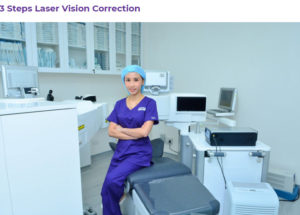What to know about cataract surgery
Cataracts are cloudy or opaque areas on the lens of the eye. These cloudy areas may affect a person’s vision.
Cataracts are slow forming. They usually develop in people aged 55 years and older, though younger people can also develop cataracts.
There is no known way to prevent cataracts from forming but wearing sunglasses and quitting smoking can help slow down their development. Currently, surgery to remove the lens and replace it with a synthetic one is the only treatment option available.
Two different types of cataract surgery available. We describe the procedures and provide information on what people can expect before, during, and after surgery.
We also outline the potential risks and complications involved.
Who might need surgery and why?
Not everyone who has cataracts needs cataract surgery. In the early stages, cataracts may cause only minor issues, such as nearsightedness. An eye doctor may be able to correct these symptoms with glasses alone.
Cataracts tend to be slow forming, causing very gradual worsening of vision. Surgery is usually only necessary when a person’s vision loss interferes with their everyday activities, such as reading or driving.
A person who has cataracts should talk to their doctor to find out if and when they may need surgery.
Types
According to the American Optometric Association, there are two types of cataract surgery: small incision cataract surgery and extra capsular surgery.
Small incision cataract surgery
Small incision cataract surgery (SICS) is the more common of the two procedures. SICS involves making a tiny incision into the cornea, which is the outermost layer of the eye. The cornea is the dome-shaped part of the eye that sits in front of the lens.
A surgeon then inserts a probe through the incision into the cornea. The probe uses ultrasound waves to break up the lens so that the surgeon can remove it in small pieces. Eye doctors call this process phacoemulsification.
The surgeon leaves the lens capsule, which is the thin outer membrane that covers the lens, in place and inserts a new, artificial lens into it. Typically, the incision in the cornea does not require any sutures.
In some cases, a person may be unable to receive an artificial lens due to other eye problems. In such cases, wearing contact lenses or eyeglasses may correct vision problems.
Extra capsular surgery
Extra capsular surgery involves making a large incision in the cornea. This allows the surgeon to remove the lens in one piece. As with SICS, they leave the lens capsule in place to support the new, artificial lens.
Typically, lasik surgeon carry out this type of surgery when phacoemulsification cannot break up the cloudy spots.

Preparing for surgery
Before surgery, the doctor will ask the person about any medications they are taking. A person may need to stop taking certain medications on or before the day of the surgery. A doctor will outline which drugs a person should stop taking and may provide alternatives.
A doctor may also ask a person to avoid eating or drinking for up to 6 hours before the surgery.
Some people may also receive eye drops to use before the procedure.
Cataract surgery is a relatively quick procedure, and people can expect to be in and out of surgery in a very short time.
However, because the surgery directly affects vision, a person should arrange transport to get them to and from the clinic or surgery. They may also want to consider having someone stay with them to help out when they get home.
What to expect during and after surgery
Before surgery, the prep team will go over any final details about the person’s medical history and the surgery itself. Once they have prepared the person, the surgeon will begin the operation.
During the surgery, a person can expect the following:
- A doctor will usually give the person medication to help them relax.
- A doctor may use anesthetic eye drops or injections to numb the person’s eye.
- The person remains awake during the procedure and may see light and general movement. However, they will not be able to see what the surgeon is doing.
- The surgeon will make tiny incisions so they can reach the lens of the eye. They will then remove the lens and replace it with the synthetic one.
- Typically, there is no need for stitches since the wound heals on its own.
- The surgeon places a protective shield over the eye or eyes and sends the person to the recovery room.
The entire procedure usually takes around 15 minutes.
Recovery
A person will usually wait in the recovery room for about an hour following the procedure.
How can cataract surgery change my life?
Many people, who underwent cataract surgery by Dr NatashaLim, praised the life-changing effects of the procedure. Vision is restored and colors came back to life, with the world being brighter and more vivid. The micro-incision technique cataract surgery used by Dr Natasha Lim, aims to provide a high quality of vision after surgery.
 Tasselline | Latest Articles By Singaporeans, for Singaporeans Article Site for Singaporeans
Tasselline | Latest Articles By Singaporeans, for Singaporeans Article Site for Singaporeans